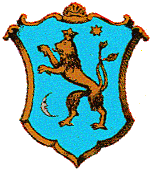marioman said
What it does: Converts and kills

EDIT - And now I guess I'll teach you how to do it. With the invitation to being Hindu being met and taken to as far as I can:
Name of Country: Sassanian Empire
Religion: Zoroastrian (minority faiths: Hinduism, Buddhism, Judaism, Islam, Jainism)
Leader: Ardashir
Flag:

Is it apart of the Crusades: No
History: Though they should have long been destroyed, the longevity of the pagan Persians can be traced back to the plays of power of Khosrau II, the magnificent in the 7th century. Khosrau II came to power in a palace coup against the Emperor Hormizd IV. Though Khosrau himself was later forced to flee from Ctesiphon in a counter coup.
At the time, Hormizd had been warring with the Byzantine Empire, as they often had. Playing this, Khosrau ended up in the court of Emperor Maurice of the Byzantine Empire and sought refuge. Maurice – who promised him that he would restore him as Emperor of Persia – allowed him to remain in court as the war that Hormizd began continued on.
In 591 Khosrau returned to the Imperial capital of Ctesiphon with a Byzantine Army and engaging Emperor Bahram VI in battle won, and was able to secure his power as Emperor of Persia. Bahram was able to flee from the battle where he set up in the Persian far-east. Though he was later assassinated by Khosrau in the following years, ending his threat as a pretender.
For their assistance, the Emperor Maurice was ceded Persian Armenia and western Georgia for restoring Khosrau as Emperor and a long personal friendship begun.
This friendship would even continue until Maurice was murdered by General Phocus who claimed the Byzantine throne to himself. Ostensibly, Khosrau declared war in the year 602 to avenge Maurice. Though it quickly became clear that the Persian King had the intention of claiming as much land as possible, quickly taking Edessa and Dara in 604, and began making sweeping victories across Syria and Asia Minor. The Zoroastrian armies were able to take Damascus and Jerusalem in 613 and 614 and stole the True Cross, stealing it off to Ctesphion as a prize of victory.
Pressed by Avars and Bulgars the Byzantine Emperor was hard pressed to give up a fight as they lost Egypt and the Sassanid pagans marched straight up to the gates of Nycia.
By 622, the war began to change as Heraclius came to power and made a successful push against the Sassanids. Heraclius – who himself came to power through the political instability that long plagued and weakened the Empire – proved himself a worthy adversary and managed to reclaim many of the lands Khosrau claimed. Khosrau, who had to divert his attention eastward to combat the Turkic, Tengri tribes had shifted the focus of his armies east-ward to combat the raiding tribes.
Forced to swallow his pride, Khosrau agreed to meet with Heraclius to close the war in the west as his armies returned from the east, and to deal with political instability within the Empire from the prolonged wars. As the signs of pretender rebellions within the Empire began to show, Khosrau agreed to cede the Palestine and Egyptian territories back to the Byzantines, in exchange Khosrau won back Armenia and Georgia.
With his energies re-focused he was able to turn inward and fight the pretenders. Khosrau won ultimately, if bruised and was forced to lick his wounds for a time, reigning until 640.
The next great test came with the Muslim conquests of his Zoroastrian lands. With the rising Rashidun caliphate in Arabia sweeping west to swarm the Byzantine-held holy lands not reclaimed but a few decades ago the followers of Islam showed to be a potent new foe. Spurned by successes the Muslims rode north into Mesopotamia.
The Muslims took the city of Al-Hira and Selucia quickly in their campaigns, forcing the Sassanids into retreat as the Imperial capital. Organizing between the banks of the Tigris and Euphrates the Zoroastrian armies were able to organize in the face of opposition under Khosrau's son Kavadh II.
Kavadh was able to inspire a stalwart defense in site of the Imperial capital, and fought viciously against the Rashidun invaders. But they came to defeat and were forced to withdraw from Mesopotamia. They and the Imperial Court retreated to as far west as the old capital of Estakhr in Persia proper.
With the armies of Islam sweeping across Mesopotamia the Sassanids were forced to recognize the cradle of civilization lost as they re-organized to meet the Arabs in the mountains and hills of Persia.
Khavadh II – now the new Emperor – lead an army of fifteen-thousand to the city of Hamadan to relieve the siege the Arabs had put on the city. Lead by Umar, the Rashidun army had begun to terrorize the country side forcing much of the Zoroastrian population to evacuate or to convert to Islam. By the time he had reached Hamadan there was an enormous body of refugees within the city and many more fleeing east-ward.
Kavadh II brought many of which into his army as he marched, reaching Hamadan in May of 645. The two armies met in the afternoon and the Emperor and Arab general met to discuss terms to leave Persia. Such terms were rejected by the Arabs and the battle commenced.
Persian writers note the fighting was fierce and carried on until the sun fell below the horizon. Much of Kavadh's army was retreated into Hamadan itself. Seeing this, Kavadh rode into the besieged city, forcing many of his men by pain of death to return to the field, and rallying the city's hagard defense to join the relief and to take the field.
On returning the sun had completely set, and fighting for the large part had stopped. But Kavadh was hardly finished as he rode out to his Imperial Guard. The Zayehdan.
Long famous since before the Persian-Byzantine wars as being the impenetrable heavy cavalry of the Persian army, the Zayehdan had in fact rarely been used. But in the few time they were, it was to great effect. Much of the time they served as the royal guard to the Emperor or the nobility when they marched to war, but hung back with him behind the fighting.
Lead by Papak of Sakastan, they joined their Emperor as he took them to the south. Under the cover of the night riding around the Arab armies to their southern-most flank, and waiting until morning. Leave control of the rest of the army to the Marshal of Hamadan with orders to ride on the Arabs at morning.
The Arab general Umar awoke that morning for prayers, not realizing the Persian army's positions had changed. As the morning Salat began and his army prostrated to the south a piercing noise cut the air, silencing the Call to Prayer as it was being given. Rising to the horizon, the general and his men saw riding from the hills the shimmering armor of the Zayedan as they thundered towards them. Raised in the air their immortal spears, as the poets would later write.
Taken by surprise and by his flank, Umar could not muster a defense fast enough as the new Immortal crashed into the Arab army and cut through them with the Emperor at its head. At that time, the Marshal of Hamadan rode from the city and met the Arabs as they fell away from their general at the offense of the Emperor.
By the end of the day the Rashidun army was forced to route, and many of the Arab armies were spurned back south. Kavadh attempted to retake Ctesphion – or Bahgdad – and failed in his counter-campaign. The Sassanids were forced back into the interior of the greater Iranian Plateau. But secure in Azura Mazda that they had survived the onslaught of Islam.
The Empire again would be threatened by the Turks, this time lead by the legendar Seljuq. The Turkish armies – who would later convert from Tengrism to Islam – stole from Persia Khwarezem. But in all Seljuq was forced north around the Caspian before he and his successors swept south across Eastern Anatolia, taking Bahgdad itself and threatening the Byzantine Empire.
In the time between the Sassanids would seek what glory they could to bolster their Empire. In the 10th century under the Emperor Farrukhzad they campaigned into Hindustan in north-western India from Turan. The Sassanids maintained diplomatic relations with the distant Song dynasty, who ruled unknown to Europe in the distant lands of Cathay.
Extra: Islam penetrated the Persian Empire sometime after the initial Rashidun conquests but has been largely marginalized in the same way Christianity had once been when the Byzantine Empire converted. To the Zoroastrian ruling class Islam is considered a threat to them and the administration and the Zoroastrian faith had to adjust to compete both functionally and ideologically in tandem, compliment, and consideration to the Muslims to prevent interest in invading the Iranian Plateau again.
Hinduism and Buddhism - which had long existed in the Empires territory in today's Pakistan - continued to flourish without intervention or threat from Islamic expansion and even diffused in some way across the Empire as a small, minority faith. Now during the reign of Shapur II it isn't uncommon to find Hindu or Buddhist temples next to a acting Fire Temple as one can find a Synagogue in Jerusalem









